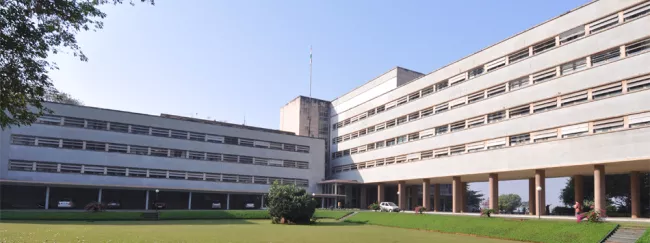
Centers of scientific excellence: What can we learn from India?
In July 2007, the late President Hosni Mubarak issued a decree establishing the Science and Technology Development Fund to provide key support for funding scientific research and technological development, as well as assessing indicators for science, technology, research output, and patents.
Twelve years later, President Abdel Fattah El-Sisi enacted a law renaming it the Science, Technology, and Innovation Funding Authority (STDF). This transformed it into an independent body empowered to set up companies and production projects, while remaining under the auspices of the Ministry of Scientific Research.
The STDF funds research in both basic and applied sciences, such as engineering, medicine, and agriculture. Its strongest support, however, goes to the fundamental sciences—mathematics, physics, chemistry, biology, and geology—seen as the driving force of scientific progress and technological innovation.
With an estimated budget of 500 million Egyptian pounds (about $10 million), it is the country’s largest funder of scientific and technological research.
The idea of creating scientific excellence centers, which the STDF has since adopted, first emerged in post–World War II Europe. The challenge for war-torn nations was not only physical reconstruction, but resuscitating scientific life after the collapse of research communities, especially in Germany.
These centers became effective tools for scientific revival. If a state could not simultaneously fund advanced facilities, laboratories, and equipment at all universities and research institutes, it could concentrate its resources in a few select institutions that would serve as hubs for advanced knowledge.
Such centers train top-tier scientists to international standards, raising the quality of a nation’s research and knowledge production. Over time, these scientists disperse into universities and research centers across the country, forming elite research groups that become the nucleus of a thriving scientific community.
This model helped several European countries recover, and was successfully adopted later in the 20th century by developing nations such as China, India, Brazil, and South Korea. These countries created a small number of excellence centers dedicated to advanced research in diverse scientific and technological fields, with a special emphasis on the fundamental sciences.
Notable examples include the Max Planck Society in Germany, the Niels Bohr Institute in Denmark, and India’s Tata Institute of Fundamental Research (TIFR). All prioritized fundamental research and offered world-class laboratories to exceptional scientists—whether nationals or skilled immigrants.
They demonstrated that investment in basic sciences delivers the highest long-term returns by producing unexpected innovations, solving complex problems, creating jobs, and even spawning new companies built on cutting-edge technologies.
The base of the scientific pyramid
Many see the fundamental sciences as purely academic or “luxury” disciplines, unrelated to real-world technology. In reality, a society’s technological output is the visible tip of an iceberg of scientific activities stacked on top of each other.
The largest and most important layer is fundamental science, the vast storehouse of knowledge about natural, physical, and biological phenomena. This reservoir is the source of ideas for every technological, engineering, and medical invention and innovation that attracts investment. Without it, humanity would know nothing of science.
The second layer consists of experimental and applied scientists who transform this knowledge into preliminary devices or techniques. The more of these scientists a society has, the greater its capacity for innovation.
The third layer is made up of engineers and technicians who turn prototypes into testable, manufacturable devices. The fourth is the manufacturing layer, where tested devices become commercial products for consumers.
Understanding fundamental phenomena underpins much of the comfort we enjoy today: biological research led to the antibiotic penicillin; studies of heat in physics produced steam engines and refrigeration; research on electricity and magnetism gave us electrical power and modern civilization.
The statistics confirm a strong correlation between the volume of a country’s basic science research and its economic strength. True scientific renaissance lies not in the products we see and use, but in the fundamental knowledge that makes them possible and paves the way for unimagined breakthroughs.
The Tata Institute for Fundamental Research
Founded in India in 1945, two years before independence, TIFR focused on fundamental science rather than immediate applications. More than just a teaching or research institute, it became one of the pillars of India’s post-independence scientific rise and left a lasting impact on the nation’s global scientific standing.
Its founder, Homi Bhabha, believed genuine technological progress was impossible without a strong base of fundamental knowledge. The institute attracted the country’s brightest minds and served as a center of expertise that produced generations of outstanding scientists.
Through its graduate programs, it trained thousands of researchers who went on to lead in academia, industry, and technology. Many played key roles in India’s nuclear and space programs—two of its most notable achievements.
Although focused on basic sciences, the institute also influenced applied technology. In 1957, it built India’s first digital computer, TIFRAC. Skills gained from basic research later helped establish institutions such as the Indian Space Research Organisation (ISRO).
In recent decades, TIFR has expanded partnerships with private firms like Agilent Technologies, creating research centers in areas such as human health and metabolism. These collaborations aim to bridge the gap between fundamental science and clinical or industrial applications, directly addressing pressing national challenges.
The Max Planck Society
In mid-1940s Germany, as World War II ended and the nation lay divided and devastated, the US-funded Marshall Plan focused on the reconstruction of buildings, facilities, and infrastructure rather than research or higher education.
The founding of the Max Planck Society successor to the Kaiser Wilhelm Society, the Third Reich’s main scientific body—was a wholly German initiative. Over decades, it restored the country’s scientific leadership, producing outstanding researchers who influenced not only Germany but many Western nations.
The society’s rebirth owed much to visionaries like Nobel laureate Werner Heisenberg, who co-founded and directed it in the 1950s. Convinced that basic science was the only path to rebuilding German research, Heisenberg renewed ties with colleagues worldwide and took part in international conferences, becoming a symbol of scientific renewal.
Generous funding and technological resources attracted leading scientists from around the globe, turning Max Planck into an intellectual powerhouse. Many of its researchers contributed to major European projects such as CERN, home to the Large Hadron Collider, whose groundbreaking experiments on particle physics would have been impossible without decades of foundational research by institutions like Max Planck.
Lessons for Egypt
Egypt can draw powerful lessons from these experiences: a scientific renaissance requires substantial investment in basic sciences, which fuel creativity and innovation and open new horizons for knowledge.
Such centers must be autonomous bodies reporting directly to the prime minister and free from bureaucratic constraints. They should have full authority to recruit the best Egyptian minds at home and abroad, and to provide research environments rivaling the world’s top institutes.
While these centers can also address national priorities such as renewable energy or artificial intelligence, they must rest on a firm base of research in the fundamental sciences.
Most crucially, their leadership should be chosen from among distinguished researchers, not political loyalists. Leaders must be visionary scientists capable of shaping policy and building the future, and empowered to appoint world-class faculty—many of whom already exist in Egypt.
The state should invest generously in laboratories, computing facilities, and scientific equipment, and fund researchers to attend conferences and workshops, enabling them to exchange ideas and return with fresh collaborations.
In short, centers of excellence have proven to be powerful engines of scientific renaissance. They lay the foundations for progress, train generations of scientists and leaders, and contribute directly to major technological achievements.

